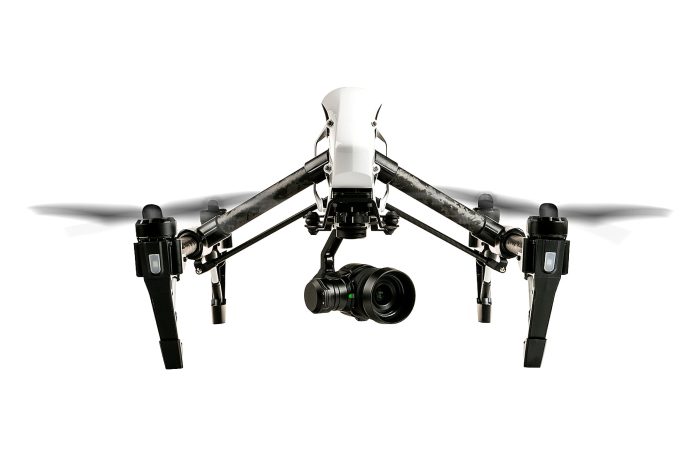Alarm monitoring is likely to get increasingly funky over the next couple of years as the impact of home automation continues to ripple through the market. But there’s more to it than mere comms. Some of the new technology coming through is likely to see alarm monitoring really take off.
WHEN SEN started compiling this month’s cover story on the products and technologies we’d be likely to see in 2017, our imaginations had not reached the heights of the teams at Alarm.com and Qualcomm, which have announced plans to develop autonomous, video-enabled drones for smart home and business security. The drones will use the company's new Insights Engine multi-sensor learning capability teamed up with the Qualcomm Snapdragon Flight drone platform, to investigate unexpected activity.
“This is a very interesting application for drones, which at their core are essentially flying cameras, and by using other advanced capabilities of our Snapdragon processors, Alarm.com is designing a whole new way to provide security to properties,” says Hugo Swart, senior director, product management, Qualcomm Technologies. “The Qualcomm Snapdragon Flight platform pushes the boundaries of the drone industry and has led to many new form factors and use cases, and Alarm.com, with its security expertise, is taking commercial and residential security systems to the next level by integrating intelligent and cutting edge drones to its solutions.”
It all sounds a bit far-fetched until you consider the fact that what these companies are developing is a mobile, automated CCTV camera – a sort of Smart-Trac on the wing – that can offer video verification of intrusion events when camera views don’t reach. In domestic applications, the drones might check on the property perimeter but in commercial applications after hours, such a system would offer the sort of bulletproof alarm verification that is almost guaranteed to attract companies hungry for cost reduction.
The drones will be designed to autonomously navigate through the property and provide a high-resolution video feed to the property owner, a security team or a monitoring station. Strict, opt-in privacy controls will enable the property owner to share the video feed with a central monitoring station and emergency responders.
Central to the whole solution is Alarm.com’s Insights Engine learning capability, which applies machine-learning algorithms to the growing data set generated by devices and sensors in a connected property. By recognizing complex activity patterns and detecting anomalies, the system can proactively respond to events on behalf of the user. Alarm.com intends to leverage these insights to intelligently deploy video-enabled drones to the location where unexpected activity was detected or wherever an alarm was triggered.
Machine learning
Insights Engine is the key. Alarm.com’s proprietary machine-learning capability already safeguards homes and businesses by identifying patterns and insights in the growing set of data generated by devices and sensors in a connected property. It achieves this by learning the unique activity patterns of a site and then responding to unusual activity. If the Insights Engine determines that the homeowner should be alerted to a situation, a push notification is sent, all without the homeowner having to create custom rules or notifications.
What the Alarm.com Insights Engine does is continually adapt based on a range of factors including user input, changes in activity patterns and external factors. Actionable notifications allow users to train their smart homes to learn their preferences faster and to quickly adjust to new schedules. Notifications come with simple feedback options including Yes or No on the usefulness of each notification, enabling the Insights Engine to adapt quickly based on minimal user input. A third feedback option lets users ‘pause’ notifications for 24 hours to incorporate a sudden but temporary schedule change such as a sick day.
And time-intelligent notifications adjust in sensitivity depending on when an event takes place. An open garage door during daylight hours, for example, may not trigger an immediate notification. However, after sunset the system becomes more sensitive to security risks and is more likely to immediately alert the homeowner. It is these same rules that will be used by security drones to monitor events and conditions around a property and then inform management or homeowners there’s an issue that needs to be dealt with.
“Alarm.com has been a pioneer in the smart home and business security space,” says Daniel Kerzner, Alarm.com’s chief product officer. “By analyzing data across the devices on our platform, we have created unique capabilities that make properties safer, smarter and more efficient. We’re excited to use Qualcomm Snapdragon Flight to develop similar applications for drones. Our intelligent drone deployment system will be designed to provide targeted video in response to specific events around a property – augmenting fixed location cameras and enhancing the active security perimeter for homes and businesses.
“Alarm.com has always aggregated sensor data to create an intelligent, proactive and contextually aware smart home experience,” says Kerzner. “The Insights Engine is an example of how we are extending that approach with machine learning to define the next generation of smart home solutions.”
There’s a nice fit here. Quality drones recharging between flights are exceptionally capable flying machines that provide a stable platform for IVA-powered cameras. They would prove useful in larger domestic applications but it’s in commercial applications where such technology would really shine, offering the capability to autonomously tour an entire site, or to respond to specific alarm events with extreme speed – not just after work hours but during the day when alarm responses can be so difficult. ♦












